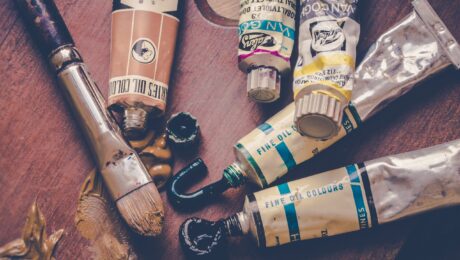Radio Controlled Cars
Why radio controlled vehicles?
The enjoyment of RC cars extends far beyond the simple act of operating a miniature vehicle. It encompasses a thrilling combination of technical mastery, creative customization, and adrenaline-pumping racing experiences. From meticulously tuning the suspension to achieve optimal performance on various terrains to the sheer joy of executing precise maneuvers at breakneck speeds, RC car enthusiasts find themselves immersed in a world where imagination meets engineering. Whether it’s the satisfaction of building a model from scratch or the camaraderie fostered through competitive races, the hobby offers endless opportunities for excitement and fulfillment, making every moment behind the remote control a thrilling adventure.
- Published in Radio Controlled Cars
“What type of paint should I use?”
Like any craft, learning how to paint will take some time before you are comfortable with it. There are several types of paints or mediums to consider:
Acrylic paint is fast-drying and doesn’t have a profound smell like oil paints. The colors are generally very bold, and they dry within minutes. Acrylic paints tend to dry a darker shade than when they are wet, Once the painting is dry, it cannot be altered, but the good thing is that the cleanup is very easy.
Oil paints can take a full day or longer to completely dry. Since oil paintings take longer to dry, they allow for layers and defined textures to be built up over time.
Watercolor is easier to work with and allows for transparency, which means you can see through the layers of paint.
Gouache paints dry quickly. The colors change as they dry. The painting can look uneven and brittle when dry.
- Published in Artistic Essentials
“I have never painted before. What do I need?”
Starting with painting can be an exciting journey! Here’s a basic list of materials and supplies you might want to consider getting:
1. **Paints**:
– Acrylic paint: It’s versatile, quick-drying, and easy to clean up with water.
– Watercolor paint: Provides transparent and delicate effects.
– Oil paint: Offers rich colors and blends well, but requires more ventilation and longer drying times.
2. **Brushes**:
– A variety of brushes in different shapes and sizes for different techniques. A basic set usually includes flat, round, and detail brushes.
3. **Canvas or Paper**:
– Canvas boards, stretched canvases, or watercolor paper depending on the type of painting you want to do.
4. **Palette**:
– You can use a traditional palette or a disposable palette pad for mixing colors.
5. **Palette Knife**:
– Useful for mixing paint on the palette and applying paint in thick layers or textures.
6. **Easel**:
– Optional but helpful for holding your canvas or paper at an angle while you work.
7. **Painting Mediums**:
– Depending on the type of paint you choose, you might need mediums like acrylic medium, linseed oil, or watercolor medium to adjust the consistency and texture of your paint.
8. **Painting Surface Protection**:
– Protect your workspace with a drop cloth or old newspapers to prevent spills and stains.
9. **Cleaning Supplies**:
– Have water (for acrylics and watercolors), paint thinner or mineral spirits (for oils), and rags or paper towels for cleaning brushes and spills.
10. **Palette Cups or Jars**:
– For holding water or solvent for cleaning brushes.
11. **Sketching Supplies**:
– Pencils, erasers, and a sketchbook if you want to plan your paintings beforehand.
12. **Reference Materials**:
– Photographs, still-life setups, or images for inspiration and reference.
13. **Finishing Materials**:
– Varnish or fixative (depending on your medium) to protect and preserve your finished paintings.
Remember, you don’t need to get everything at once. Start with the basics and gradually add to your collection as you become more comfortable with painting and discover your preferences. Experimentation is key, so don’t be afraid to try new techniques and materials!
- Published in Artistic Essentials




